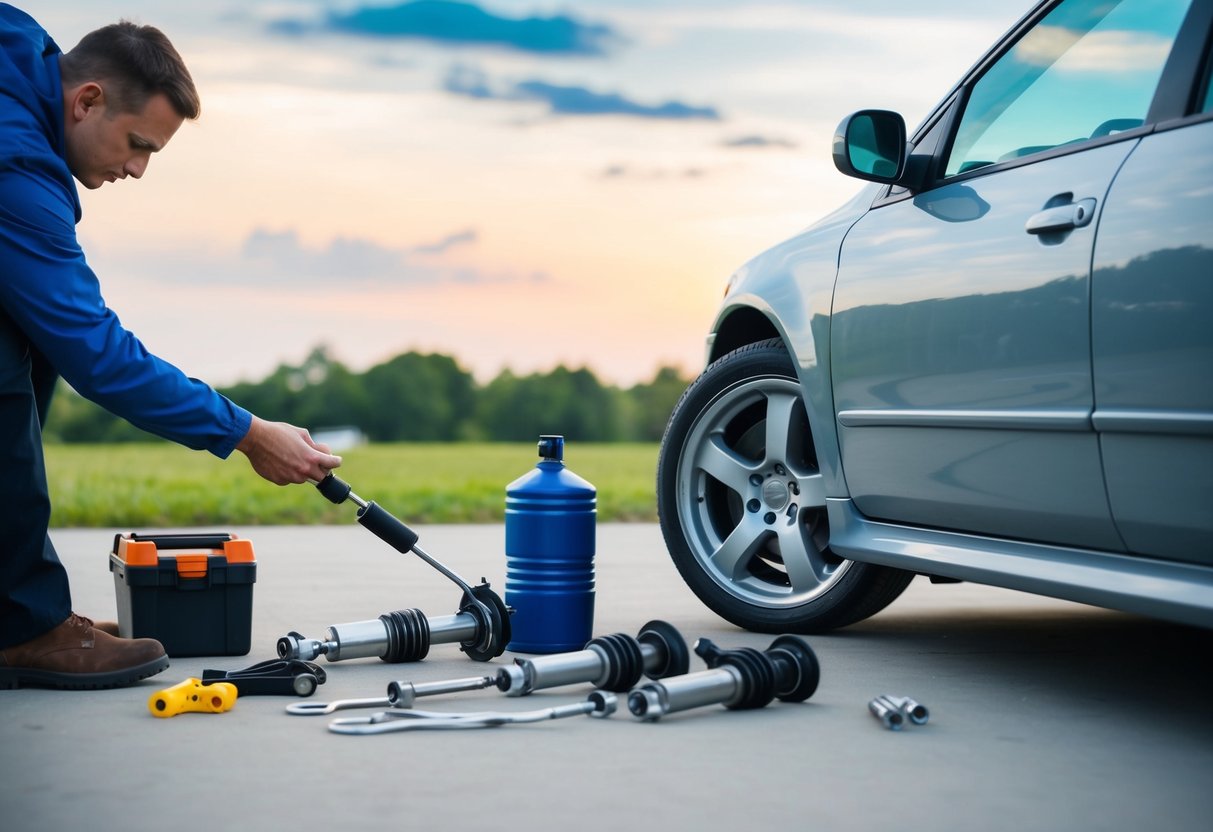Extending the Life of Your Car’s Suspension System: DIY Tips and Tricks
Optimizing Tire Health
Proper tire care is crucial for maximizing the lifespan of a car’s suspension system. Regular maintenance helps prevent uneven tire wear, which can affect vehicle handling and safety.
Maintaining Proper Tire Pressure
Regularly checking tire pressure is necessary for optimal performance and fuel efficiency. Tires should be inflated to the manufacturer’s specifications, typically found in the owner’s manual or on the doorjamb. Incorrect tire pressure can lead to uneven wear or reduced traction.
Investing in a quality tire pressure gauge ensures accurate readings. Checking tire pressure once a month and before long trips is recommended. It’s important to remember that temperature changes can affect tire pressure, with cold temperatures often causing a decrease. Keeping tires properly inflated ensures better contact with the road, improving handling and prolonging tire life.
Consistent Tire Rotations and Alignment
Rotating tires every 5,000 to 7,000 miles promotes even wear and extends tire life. Patterns for rotation vary based on the vehicle’s drivetrain, such as front-wheel, rear-wheel, or all-wheel drive. This routine helps prevent uneven tire wear, improving the vehicle’s handling.
Wheel alignment should also be checked at least once a year or when new tires are installed. Misalignment can cause the car to pull to one side and lead to accelerated wear on specific tires. Proper alignment ensures that all four tires meet the road at the correct angle, optimizing performance and safety.
Assessing Tread Depth for Safety
Regularly examining tread depth is essential for safe driving, particularly in wet conditions. The tire tread provides traction and helps avert hydroplaning. A simple method for measuring tread depth is the penny test, where placing a penny upside down in a tread groove can indicate if replacement is necessary. If Lincoln’s head is visible, the tire tread may be too shallow and unsafe.
Investing in a tread depth gauge offers more accurate measurements. Most experts suggest replacing tires when the tread depth reaches 2/32 of an inch. Regularly assessing the condition of tire tread ensures that tires maintain their grip on the road, providing a smoother and safer ride.
Preventative Measures Against Common Issues

Prioritizing regular maintenance and careful driving can significantly extend the lifespan of a car’s suspension system. By navigating roads carefully and addressing any automobile damage promptly, drivers can avoid common suspension problems. This helps maintain vehicle stability and performance, providing a safer and smoother ride.



